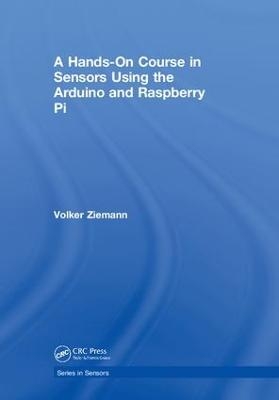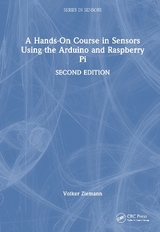
A Hands-On Course in Sensors Using the Arduino and Raspberry Pi
Crc Press Inc (Verlag)
978-0-8153-9359-7 (ISBN)
- Titel erscheint in neuer Auflage
- Artikel merken
A Hands-On Course in Sensors using the Arduino and Raspberry Pi is the first book to give a practical and wide-ranging account of how to interface sensors and actuators with micro-controllers, Raspberry Pi and other control systems. The author describes the progression of raw signals through conditioning stages, digitization, data storage and presentation.
The collection, processing, and understanding of sensor data plays a central role in industrial and scientific activities. This book builds simplified models of large industrial or scientific installations that contain hardware and other building blocks, including services for databases, web servers, control systems, and messaging brokers. A range of case studies are included within the book, including a weather station, geophones, a water-colour monitor, capacitance measurement, the profile of laser beam, and a remote-controlled and fire-seeking robot
This book is suitable for advanced undergraduate and graduate students taking hands-on laboratory courses in physics and engineering. Hobbyists in robotics clubs and other enthusiasts will also find this book of interest.
Features:
Includes practical, hands-on exercises that can be conducted in student labs, or even at home
Covers the latest software and hardware, and all code featured in examples is discussed in detail
All steps are illustrated with practical examples and case studies to enhance learning
Volker Ziemann obtained his PhD in accelerator physics from Dortmund University in 1990. After post-doctoral positions in Stanford at SLAC and in Geneva at CERN, where he worked on the design of the LHC, in 1995 he moved to Uppsala where he worked at the electron-cooler storage ring CELSIUS. In 2005 he moved to the physics department where he has since taught physics. He was responsible for several accelerator physics projects at CERN, DESY and XFEL. In 2014 he received the Thuréus prize from the Royal Society of Sciences in Uppsala.
Chapter 1: Introduction. Chapter 2: Sensors. Chapter 3: Actuators. Chapter 4: Microcontroller: Arduino. Chapter 5: Host computer: Raspberry Pi. Chapter 6: Control System: EPICS. Chapter 7: Messaging system: MQTT. Chapter 8: Example: Weather station with distributed sensors. Chapter 9: Example: Geophones. Chapter 10: Example: Monitor for the Color of Water. Chapter 11: Example: Capacitance Measurement. Chapter 12: Example: Profile of a Laser Beam. Chapter 13: Example: Fireseeking Robot. Chapter 14: Presenting and Writing. Appendix A: Basic Circuit Theory. Appendix B: Least-squares fit and error propagation.
| Erscheinungsdatum | 12.06.2018 |
|---|---|
| Reihe/Serie | Series in Sensors |
| Zusatzinfo | 115 Illustrations, black and white |
| Verlagsort | Bosa Roca |
| Sprache | englisch |
| Maße | 178 x 254 mm |
| Gewicht | 612 g |
| Themenwelt | Informatik ► Theorie / Studium ► Künstliche Intelligenz / Robotik |
| Naturwissenschaften ► Physik / Astronomie ► Allgemeines / Lexika | |
| Naturwissenschaften ► Physik / Astronomie ► Angewandte Physik | |
| Technik ► Maschinenbau | |
| ISBN-10 | 0-8153-9359-8 / 0815393598 |
| ISBN-13 | 978-0-8153-9359-7 / 9780815393597 |
| Zustand | Neuware |
| Haben Sie eine Frage zum Produkt? |
aus dem Bereich



